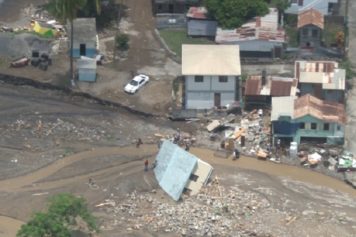
From the east coast of Mexico to Barbados, large clumps of the brown seaweed known as sargassum have been piling up, attracting biting sand fleas. In some cases, the seaweed piled up as high as 10 feet, The Associated Press reports.
With the major annual Caribbean tourism season approaching, officials across the region are worried. Lawmakers on Tobago have deemed the situation a “natural disaster,” according to The Associated Press.
“This has been the worst year we’ve seen so far,” Christopher James, chairman of the Tobago Hotel and Tourism Association, told the AP. “We really need to have a regional effort on this because this unsightly seaweed could end up affecting the image of the Caribbean.”
Some worried officials in the region are calling for an emergency meeting of the 15-nation Caribbean Community and others have freed up emergency funds to clean up the smelly mess. Mexico has said it will spend $9.1 million and hire 4,600 temporary workers to help clean up the pesky seaweed.
So why is this happening?
According to scientists interviewed by the AP, warming ocean temperatures and changes in ocean currents linked to climate change are fueling what sargassum expert Brian Lapointe said are “harmful algal blooms.”
“These seaweeds have been around for a long time,” Lapointe told Public Radio International. “They were first encountered by Columbus but really since 2011, we’ve been seeing an extreme amount of biomass of this seaweed coming ashore the beaches all around the North Atlantic region and the Caribbean. And 2015 was a particularly bad year.”
Some researchers believe that the blooms are being by fueled but sewage waste, nitrogen-heavy fertilizers or other pollutants and land-based nutrients washing into the ocean. “The nutrients may be increasing to a point where they’re fertilizing this seaweed, allowing them to grow faster and reach a greater amount of biomass,” Lapointe told PRI.
Read more at www.washingtonpost.com


